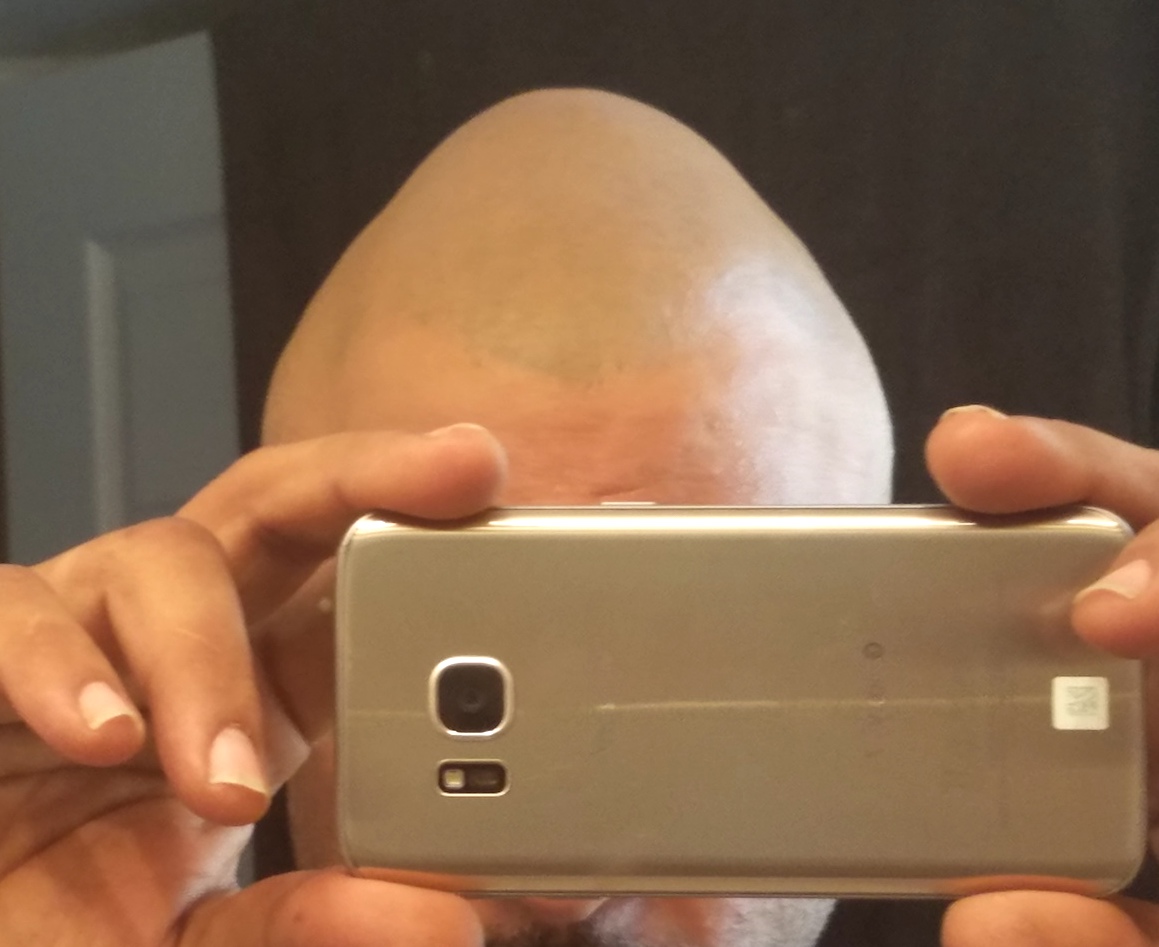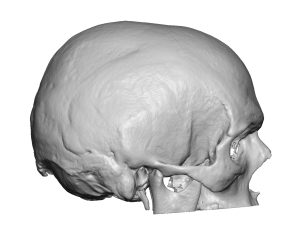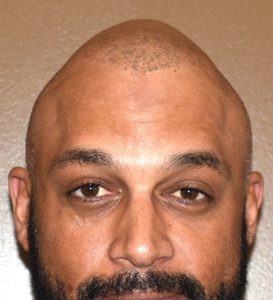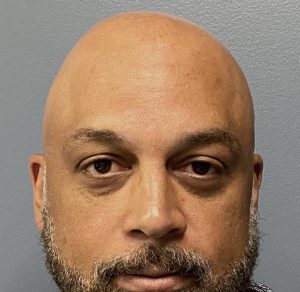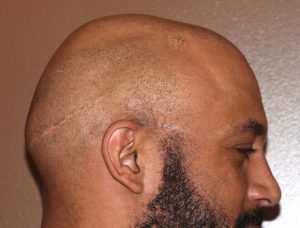Background: There are a wide variety of adult skull shape deformities some of which fit into standard shapes. One of these is the peaked head shape which can be easily recognized. When seen frontally the head has an inverted V shape or looks like a rooftop. This appears as a high sagittal ridge with narrow sides. While often perceived as being due to an abnormally elevated midline sagittal ridge, in which there is a component to it, but the greater part of the abnormal head shape is due to the lack of adequate development along the sides. (parasagittal)
Aesthetic treatment of the peaked head shape deformity can consist of sagittal ridge reduction only, parasagittal ridge augmentation only or a combination of both. Computer imaging is used to show the patient the different head shape effects that result from each of these potential changes. In moderate to more severe peaked head shapes the best aesthetic results come from a combination of midline bone reduction and a parasagittal augmentation that wraps around the back side of the sagittal ridge using a custom skull implant design.
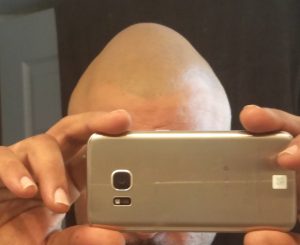
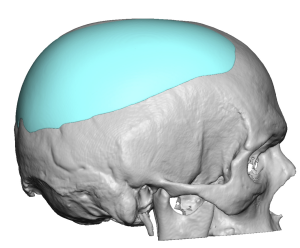
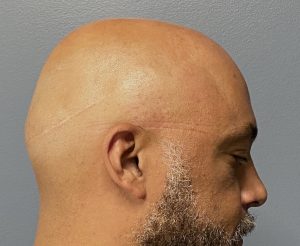
Custom skull implants for aesthetic head reshaping purposes (onlays) can be made of a variety of different materials. But the most versatile is that of solid silicone which can be manufactured in any shape and thickness and can be inserted through the smallest of scalp incisions. While it has some natural flexibility once applied on the skull it will feel just like bone. Equally importantly the material is stable, does not degrade and will never need to be replaced due to material failure. It can also never shift or be displaced due to its large surface area coverage and encapsulation. Thus it would be expected that long term custom skull augmentation implants would look the same years after the original surgery.
Case Highlights:
1) The peaked head shape deformity is often best treated by a combination of sagittal ridge reduction and parasagittal-temporal skull augmentation.
2) The skull augmentation component provides the bulk of the improvement.
3) The use of custom skull implants for aesthetic head reshaping provides stable long term results.
Dr. Barry Eppley
Indianapolis, Indiana

